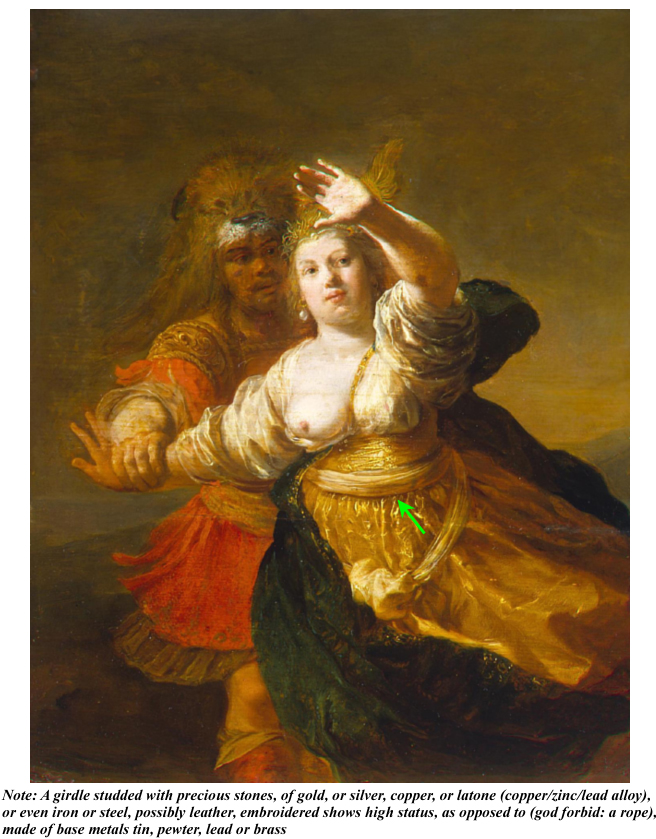
Return
Girdlers 1 made belts or girdles that
typically were worn around tunics, either at the waist or the hips, by either men or
women. These belts were either woven fibres, or of leather. Status became increasingly
significant, thus the nobility and priests wore girdles that could be studded with
precious stones, engraved cameos, or valuable metals such as gold, silver, steel, iron,
copper, or latone (an alloy of copper, zinc and lead). In addition, fibre girdles could
be embroidered.
A girdle usually had a clasp or ring of some kind, the belt wound around itself and through
the ring, hanging down in front. This ring or clasp was supposed to be of a metal that was
not base, thus likely to crack or to be too soft. Metals like iron, or steel were fine.
Although soft, for purely reasons of status, gold or silver could be used. Base or false
metals to be avoided inluded pewter, lead, tin, brass. The impoverished were likely to use
ordinary rope girdles. Paintings show religious figures or gods and goddesses usually attired
like the wealthy, quite well distanced from the Hoi-polloi. Very valuable girdles of the wealthy
were called "girdle de wreches".
Sumptuary laws were enacted that proscribed the use of expensive, status-conferring girdles
by the impoverished. The theft of girdles became a hanging matter.
A girdle not only supported garments, but often was used to carry items such as a purse, a
bunch of keys, a rosary, a pen and ink horn, and books. Often a sword, or daggers were
supported by a girdle, too.
The above description applies to girdles worn by civilians. A second class of people that
required the work or girdlers were members of the military. Girdlers also made bandyleers
(wooden cases covered with leather, used to hold gunpowder, attached by a cord to the girdle),
briggirdles (bracegirdles - girdles for breeches, not for tunics), bokelers (buckles), and
garters (garetters - girdles around the leg that could hold a dagger).
The Worshipful Company of Girdlers was a guild based upon the "mystery" of girdles.
There are four theories as to what this means:
The Worshipful Company of Girdlers was composed of Livery Freemen, generally having up to two apprentices or journeymen employed for 7 or more years learning their craft until earning Freedom and Livery. At the top of this organization was a Worshipful Master (or Alderman of the Guild). Past Masters were referred to as Fathers of the Company. There were three Wardens (Upper, Middle, and Renter), a Court of Assistants, two stewards (from the Livery), executive officers (Clerk, Surveyor, Beadle, Porter, Yeoman Searchers or Warden substitutes chosen from apprentices), and Whifflers (ushers). The company had a patron saint: St. Lawrence. The chartered guild had a Hall, more like a place to meet as well as being like a hotel where lodging, wine and meals are provided. Feasts are held in the Hall, using pewter (like the rest of the world). Seized substandard goods may be stored in the Hall. Girdlers included female girdlers.
© Copyright 2006 - 2018
The Esther M. Zimmer Lederberg Trust
 Website Terms of Use
Website Terms of Use